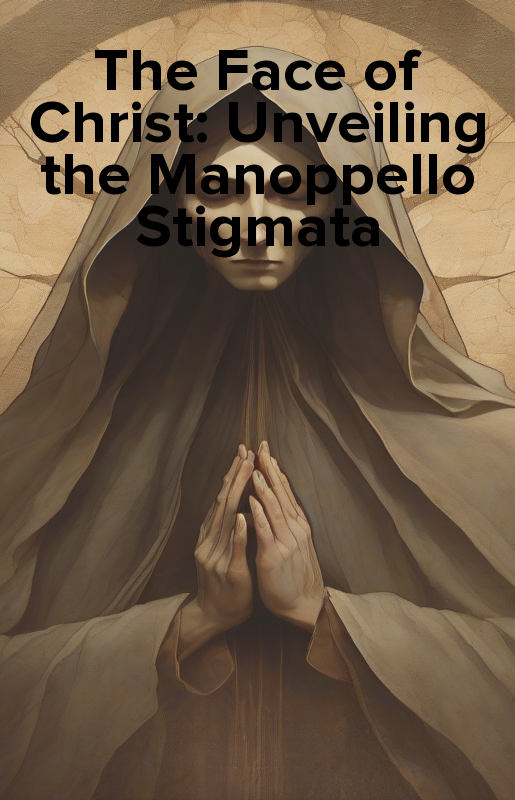Table of contents for ebook and audiobook: „The Face of Christ: Unveiling the Manoppello Stigmata”
Here's the translation of the provided text into English:
The Manoppello Stigmata
Introduction
Historical Background: The Image of Edessa
- The Mandylion and the Image of Edessa
- The Transfer of the Image to Constantinople
- The Image's Journey to the Holy Land
- The Legacy of the Image of Edessa
The Manoppello Image: A Brief History
- The Discovery of the Manoppello Image
- The Image's Early History in Italy
- The Image's Rediscovery in the 20th Century
- The Current State of the Manoppello Image
Physical Characteristics and Analysis
Morphology and Composition
- Face and Facial Features
- Body and Upper Torso
- Hands and Feet
- Veil and Mantle
Materials and Conservation
- Materials Used in the Image
- Conservation Efforts and Restorations
- Current Conservation Status
Iconography and Symbolism
Face and Facial Features
- The Face as a Symbol of Christ's Humanity
- The Eyes and Their Significance
- The Nose and Mouth
Body and Upper Torso
- The Wounds and Their Significance
- The Hands and Their Position
- The Veil and Its Symbolism
Veil and Mantle
- The Veil as a Symbol of Mourning
- The Mantle and Its Significance
- Interpretations of the Veil and Mantle
Art Historical Context and Influences
Byzantine Art and Iconography
- The Development of Byzantine Art
- The Influence of Byzantine Iconography
- Similarities and Differences with the Manoppello Image
Renaissance and Baroque Art
- The Influence of the Manoppello Image on Renaissance Art
- The Image's Impact on Baroque Art
- Artists Inspired by the Manoppello Image
Scientific Analysis and Dating
Physical and Chemical Analysis
- Pigment Analysis and Dating
- Textile Analysis and Dating
- Other Scientific Techniques Used
Dating and Provenance
- Historical and Archaeological Evidence
- Synchronisms and Coincidences
- Challenges and Controversies in Dating
Cultural and Spiritual Significance
Devotional and Spiritual Significance
- The Image as a Focus of Devotion
- The Image's Impact on Christian Spirituality
- Interpretations of the Image's Spiritual Significance
Cultural and Artistic Significance
- The Image's Influence on Art and Architecture
- The Image's Impact on Literature and Music
- Other Cultural and Artistic Significance
Controversies and Debates
Authenticity and Provenance
- Challenges to the Image's Authenticity
- Debates over the Image's Provenance
- Responses to Critics and Skeptics
Interpretations and Meanings
- Divergent Interpretations of the Image
- Debates over the Image's Symbolism
- Other Controversies and Debates
Conservation and Restoration
Current Conservation Status
- Conservation Efforts and Challenges
- Restoration Projects and Controversies
- Future Conservation Plans
Best Practices and Guidelines
- International Standards for Conservation
- Best Practices for Restoring and Conserving the Image
- Guidelines for Future Conservation Efforts
Conclusion and Future Directions
Summary of Key Findings
- Key Takeaways from the Book
- Main Contributions to the Field
- Future Research Directions
Future Research and Conservation Efforts
- Recommendations for Future Research
- Conservation Efforts and Plans
- Call to Action for the Academic and Artistic Communities
This text appears to be the table of contents for a book about the Manoppello Stigmata, a relic believed to be the image of Jesus Christ with the wounds of the Crucifixion. The book covers various aspects of the image, including its history, physical characteristics, iconography, art historical context, scientific analysis, cultural and spiritual significance, controversies, and conservation efforts.

